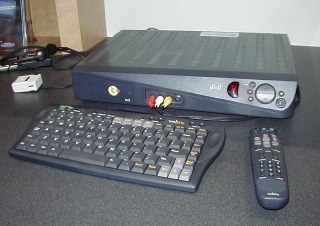 The WebTV (or MSN TV) was an device connected to a television that allows the customer to be connected to the Internet, primarily for web browsing and e-mail. While WebTV does not allow as much functionality as a computer-based web browser, it is a low-cost alternative to a traditional computer connection to the Internet. On July 1, 2013, Microsoft send an email that the service will be shutting down on September 30, 2013. WebTV Networks was founded in July 1995 located in a building in Palo Alto, California. After some months the company was sold to Microsoft and nowadays is called MSN TV.
The WebTV (or MSN TV) was an device connected to a television that allows the customer to be connected to the Internet, primarily for web browsing and e-mail. While WebTV does not allow as much functionality as a computer-based web browser, it is a low-cost alternative to a traditional computer connection to the Internet. On July 1, 2013, Microsoft send an email that the service will be shutting down on September 30, 2013. WebTV Networks was founded in July 1995 located in a building in Palo Alto, California. After some months the company was sold to Microsoft and nowadays is called MSN TV.WebTV was launched on September 18, 1996, with WebTV set-top boxes in stores from Sony and Philips. One of the downside of the first boxes was the very limited processing and memory resources. The first set-top boxes were using a 33.6 kbit/s dialup modem. The biggest problem was that the Web pages looked bad and ugly, some media formats didn't work at all, and using the remote control was problematic. One other problem was that the set-box containing strong cryptography and this limited the shipping of these boxes outside of US due to the export regulations.
Sales and Recover
April 1997, WebTV had only 56,000 subscribers, but the pace of subscriber growth accelerated after that. By April 1998 the company achieved about 325,000 subscribers and about 800,000 subscribers by May 1999. WebTV achieved profitability by Spring 1998, and grossed over US$1.3 billion in revenue through its first 8 years of operation.
Microsoft played a key role for the survival of the company. Web TV was not a failed product, but it was really close to fail. The biggest problem especially at the beginning was the bad design and the unsupported media formats.

